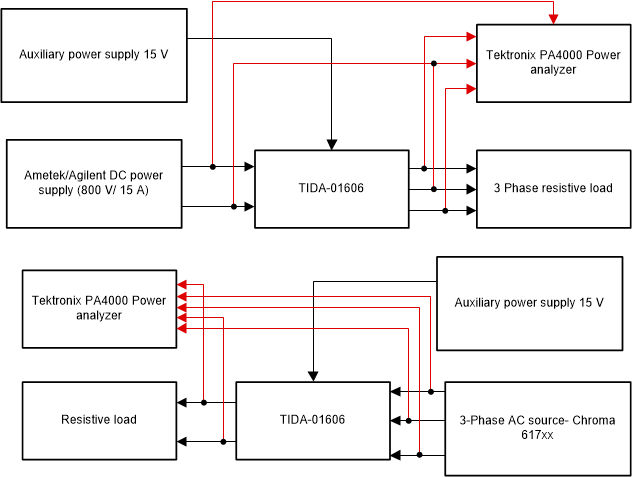TIDUE53I march 2018 – july 2023 TMS320F28P550SJ , TMS320F28P559SJ-Q1
- 1
- Description
- Resources
- Features
- Applications
- 6
- 1System Description
- 2System Overview
-
3Hardware, Software, Testing Requirements, and Test Results
- 3.1 Required Hardware and Software
- 3.2 Testing and Results
- 4Design Files
- 5Trademarks
- 6About the Authors
- 7Revision History
3.2.4 Test Setup for Efficiency
To test the efficiency of this reference design, use the following equipment as shown in Figure 3-34:
 Figure 3-34 Test Setup for
Efficiency
Figure 3-34 Test Setup for
Efficiency- A Chroma 617xx series three phase AC power supply to test PFC mode and an AMETEK, Agilent DC power supply of 800 V to support inverter mode (TIDA-01606) of operation.
- A 110-kW Simplex PowerStart (or any three-phase resistive) load bank is used as a configurable load to test the design at various set points.
- A Tektronix PA4000 Precision Power Analyzer
- An external BK precision bench power supply is used to provide a 15-V input to power the DUT.
The final design dimensions are outlined in Table 3-11 and show a total volume of 7 L. With a power rating of 10 kW, this results in a power density of 1.44 kW/L.